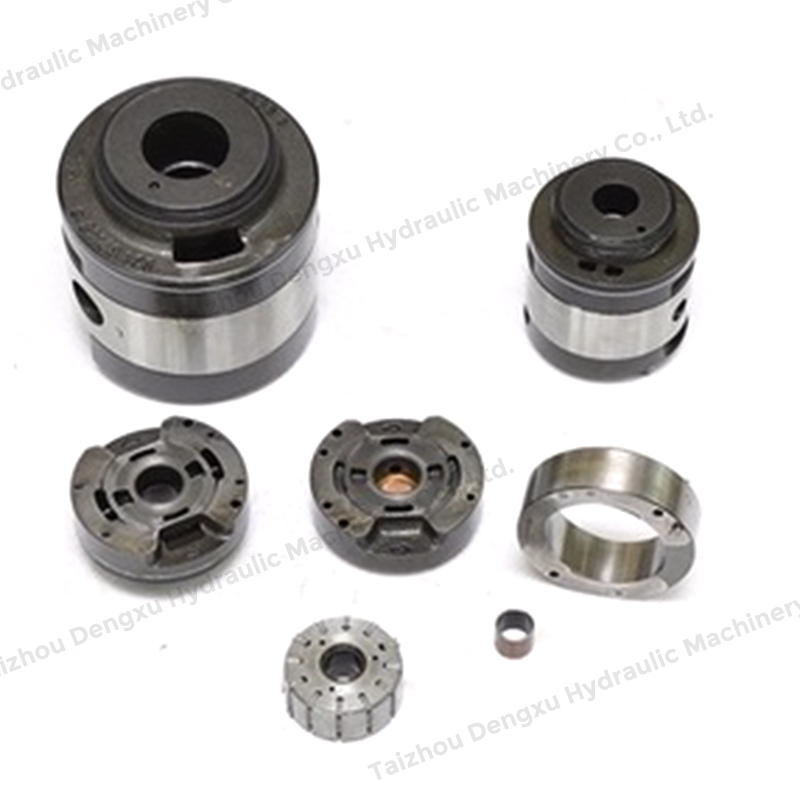Hydraulic systems are integral to various industrial, construction, and mobile equipment applications, providing power transmission through pressurized fluid. Among different types of hydraulic pumps, the hydraulic variable vane pump is a widely used choice for systems requiring flexible flow control, stable pressure, and efficiency. Unlike fixed displacement pumps, variable vane pumps can adjust the volume of fluid delivered, offering operational advantages in many industrial scenarios.

1. Flow and Pressure Control
A primary advantage of hydraulic variable vane pumps is their ability to control flow and maintain system pressure efficiently.
Adjustable displacement: Variable vane pumps allow the displacement of fluid per revolution to be changed according to the system’s demand. This feature provides precise control over flow rates, which is particularly useful in industrial machinery where different operations require varying hydraulic loads. For instance, a metal cutting machine may need high flow during fast movements and lower flow during precision operations.
Stable pressure output: These pumps maintain consistent pressure under varying load conditions. By automatically adjusting the internal vane angle, they prevent pressure spikes that could damage actuators or other hydraulic components. Real-life applications, such as construction cranes or forklifts, benefit from this stability because lifting or moving loads requires precise pressure regulation to prevent jerky motions.
Enhanced system control: Variable vane pumps allow for smoother acceleration and deceleration of hydraulic actuators. Agricultural equipment, for example, often uses variable vane pumps to adjust the speed of implements like plows or harvesters, providing gradual and predictable movements while reducing mechanical stress.
This ability to adapt flow and pressure according to operational needs ensures that systems operate reliably and safely while optimizing performance.
2. Efficiency and Energy Management
Hydraulic variable vane pumps offer energy efficiency advantages compared with fixed displacement pumps, which is a crucial consideration for industrial operations and mobile equipment.
Reduced energy consumption: By adjusting displacement to match the system’s actual demand, these pumps avoid unnecessary fluid movement and reduce energy loss. A real-world example is a factory hydraulic press, where energy usage drops significantly when the pump decreases output during periods of low pressure or idle operation.
Lower heat generation: Reducing excess flow also minimizes heat buildup in the hydraulic fluid. Excess heat in hydraulic systems can accelerate fluid degradation, reduce seal life, and cause overall inefficiency. Variable vane pumps, by supplying only the required flow, contribute to a cooler operating environment, which improves component longevity.
Adaptation to variable loads: Many hydraulic systems operate under fluctuating loads. Fixed displacement pumps provide constant flow regardless of demand, causing energy waste. Variable vane pumps adapt continuously, ensuring that power is used efficiently while maintaining system performance. This feature is especially important in mobile machinery such as excavators, which frequently switch between high and low load operations.
Energy savings, reduced heat generation, and adaptability contribute to operational efficiency, reducing operating costs and environmental impact.
3. Maintenance and Operational Reliability
Hydraulic variable vane pumps also offer advantages in maintenance and operational reliability, which is essential for downtime and ensuring continuous operation.
Reduced mechanical wear: Variable displacement capability prevents overloading of system components. By controlling the flow and pressure, the pump reduces stress on valves, cylinders, and hoses, prolonging their lifespan. A construction vehicle equipped with a variable vane pump experiences fewer seal failures and extended component intervals compared with one using a fixed displacement pump.
Easier troubleshooting: Many variable vane pumps have built-in control mechanisms that allow operators to monitor and adjust performance. Issues such as pressure fluctuation or reduced flow can often be diagnosed and corrected without extensive system disassembly, improving maintenance efficiency.
Durable design: The internal vane mechanism is designed to operate with minimal friction, reducing the likelihood of overheating or premature wear. Proper lubrication within the pump ensures smooth operation, even under continuous use in demanding environments such as hydraulic lifts or industrial presses.

 Search
Search
 English
English 中文简体
中文简体 русский
русский